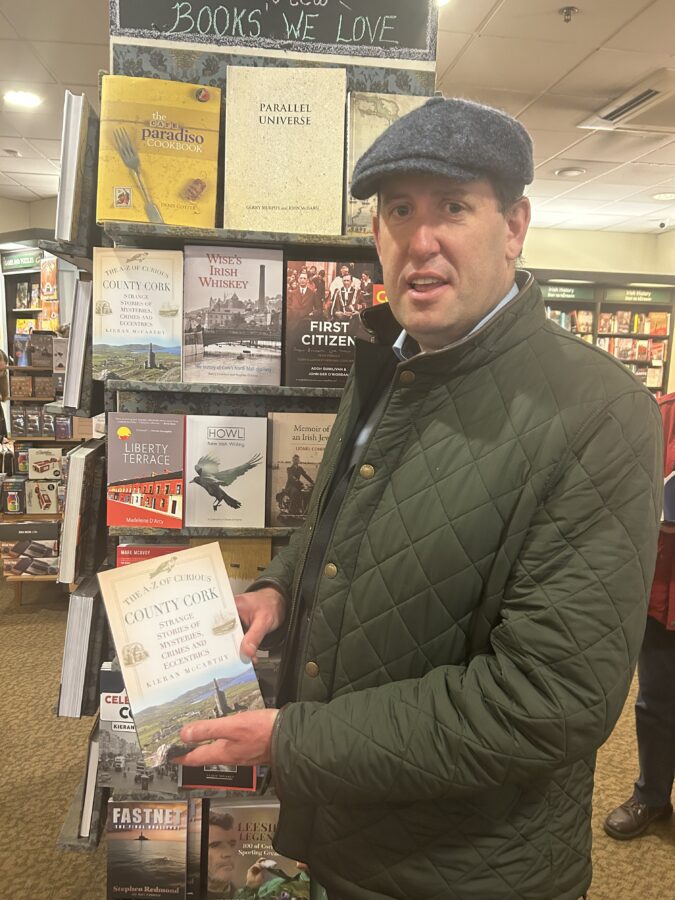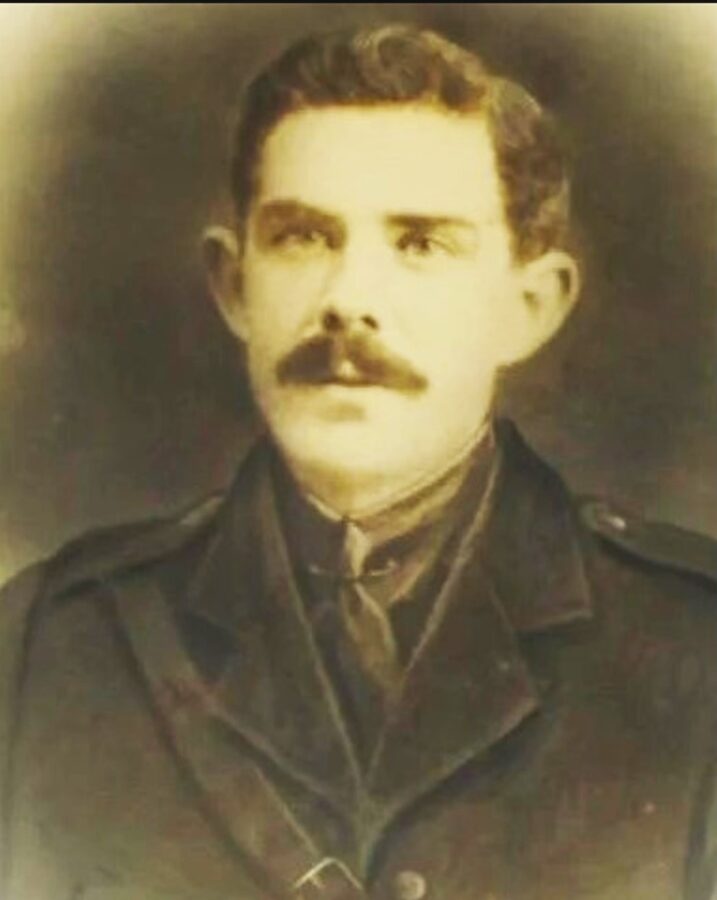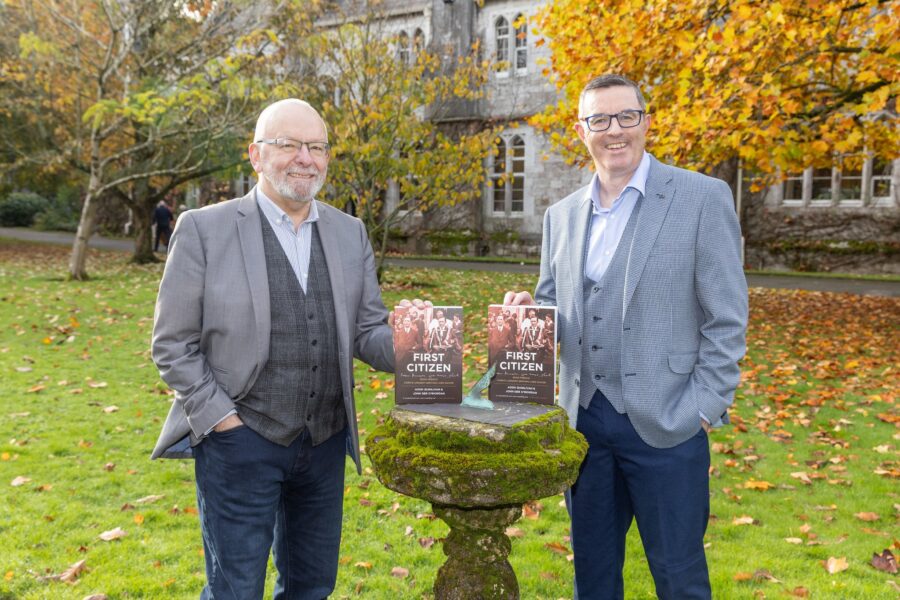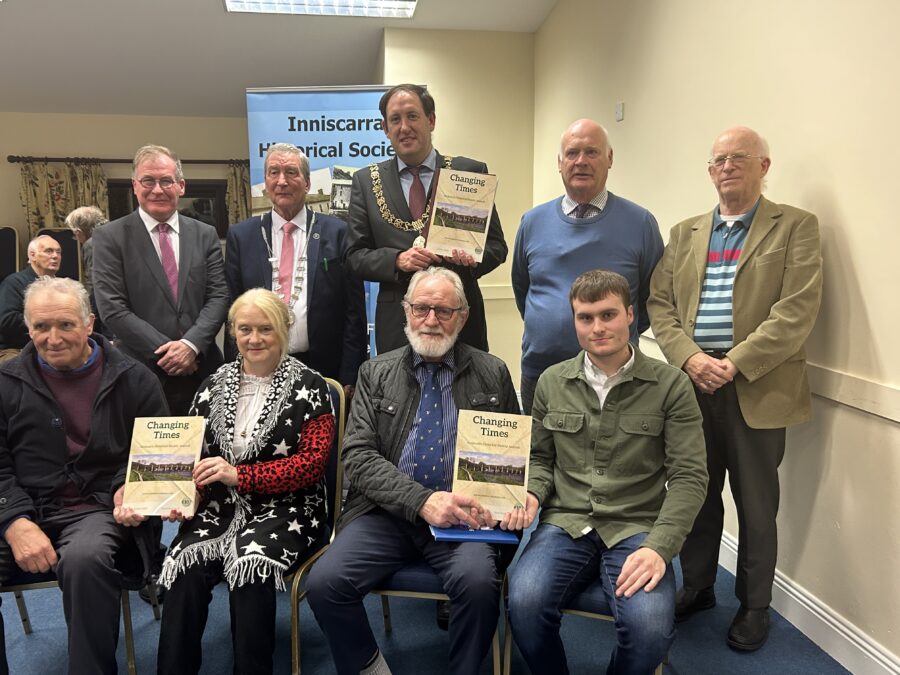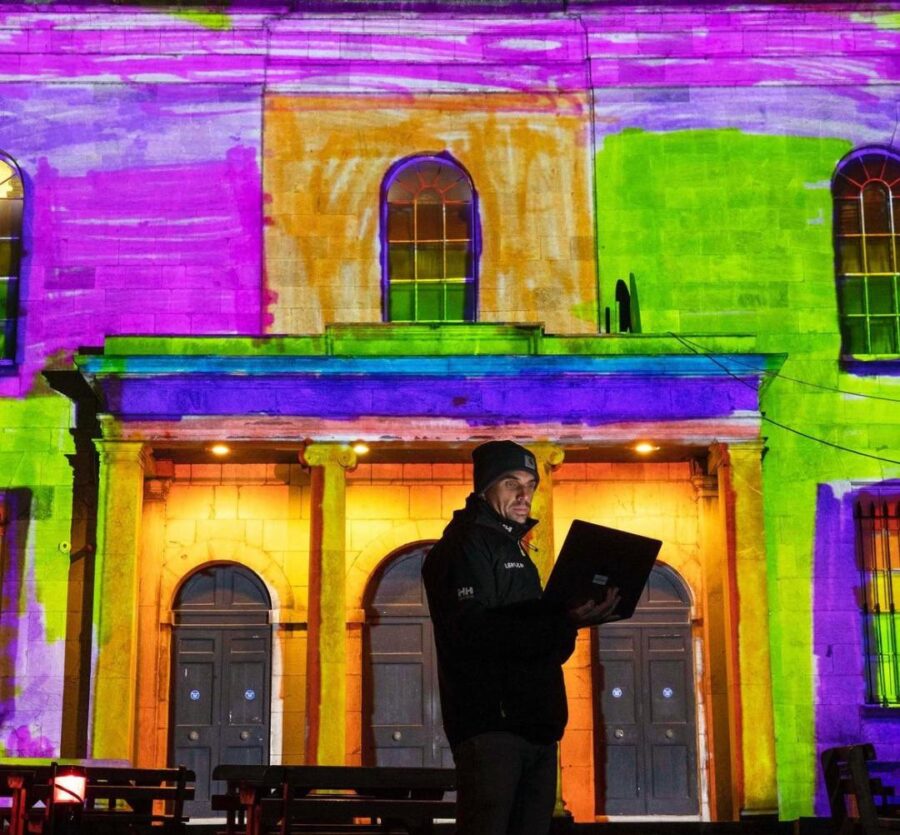
Kieran’s Our City, Our Town Article,
Cork Independent, 4 January 2024
Past Projections into the Future
The more one studies the vast stories at play in Cork City, the more they pull you in to study them more. The more they pull you in the more one gets under the skin of our historic city; one becomes even more enamoured by the rake of very interesting stories, which created our beautiful city.
In recent months one interesting project in the guise of Island City Sculpture Trail, has harnessed Cork’s urban environment and its heritage and history to bring art to the streets of Cork. The temporary artworks are located on Carey’s Lane, the Exchange Building on Princes Street, Cook Street, Cornmarket Street and soon at Triskel Christchurch.
Island city Sculpture Trail at its heart reflects on how lucky we are in Cork to have a wider heritage and historical contexts, which all add to Cork’s a strong sense of memory and a strong sense of place.
Tempus Futurum by Brian Kenny is a light projection onto Triskel Christchurch that takes viewers on a journey through the building’s rich history, present and future. Brian is a video artist and projection mapping specialist whose work focuses on the transformation of environments through the manipulation of lighting and video technology. His video and projection mapping work spans all formats of presentation from contemporary galleries to large-scale outdoor productions. He is the founder and Creative Director of Lightscape Visuals, an award-winning studio specialising in projection mapping, live visuals and immersive and interactive environments.
On the historic South Main Street there is an abundance of stories, memories, and curiosities. It is a former rushes and reeds swampland. On top of that a Hiberno-Norse settlement grew. Some of their foundational timber structures still exist and are so compacted beneath the ground because of our pressure on them. It was they who also built the first South Gate Bridge – a flimsy timber structure, which has changed at least four-five times over the past thousand years.
South Main Street became a former impressive street of the walled town of Cork, whose width was originally probably about three metres and where light onto the street was limited.
Christ Church is the fourth building on the site for Christ Church over the past 1,000 years. It’s current crypt hosting names of families from 17th and 18th century Cork whose names are embedded in street names – for example Tuckey Street.
South Main Street is a street that had once was one of the largest breweries in the South of Ireland in the guise of Beamish and Crawford. It is a street where arches such as those on the southern end of Bishop Lucey Park highlight one of the largest clothing companies in 19th century in the guise of Lyons Clothing Company.
Bishop Lucey Park, soon to be revamped with its impressive array of monuments, hosts a piece of the town wall of Cork’s Anglo-Norman walled town to a 1798 rebellion memorial, and boxing memorials. The park is a nod to the 800th anniversary of Cork becoming an official market place complete with a mayor, councillors and sheriffs.
The list of historical stories goes on – the story of the debtor’s prison, the story of Hanover Street and the House of Hanover connection, the story of Lane’s Brewery, the story of the Wide Street Commission, the earlier nineteenth yellow slob brick from Douglas Estuary in the current buildings on the street, the story of the naming of George Washington Street, the story of the Triskel Arts Centre, and the story of the Sir Henry’s Night Club. South Main Street is very fortunate to have such heritage, history and memory.
Brian Kenny’s remarkable, digitally mapped, moving image artwork is projected onto the South Main Street façade of the Christ Church, which is over 300 years old. Each evening from dusk, for up to seven months a year, the captivating 10-minute looped moving visuals will be projected for all to enjoy.
Tempus Futurum is inspired by the motto “A society thrives when elders plant trees under whose shade they’ll never rest”. It delves into past, present, and an imminent future, exploring human impact on the environment.
Amidst this journey, the perspectives of 50 local schoolchildren breathe life into the projection, offering reflections on the building’s future. Their youthful imaginations visualise a world shaped by present actions – a reminder that our choices today echo into tomorrow’s legacy.
Beginning with a interpretation of unharmed forests untouched by humanity, the first scene evokes the beauty of nature in its untouched form. Transitioning, the arrival of human settlement marks a central juncture, signalling the beginning of cultivation and humanity’s imprint on the landscape – a forerunner to the city’s birth.
Brian invites reflection into one’s relationship with the location and the city’s evolution. The artwork stresses that even in the face of an uncertain future, our actions echo – a testament to the legacy we leave for generations yet to come.
Brian notes of his narrative: “As viewers immerse themselves in this thought-provoking narrative, they become integral threads in the tapestry of time, realising that our relationship with our surroundings isn’t solitary but part of an enduring continuum—a reminder that our choices today shape the shadows cast upon the landscapes of tomorrow”.
Read more on: www.corkcity.ie/en/island-city-cork-s-urban-sculpture-trail
Happy New Year to all readers.
Caption:
1234a. Artist Brian Kenny at Tempus Futurum at Triskel ChristChurch, December 2023 (picture: Cork City Council).


